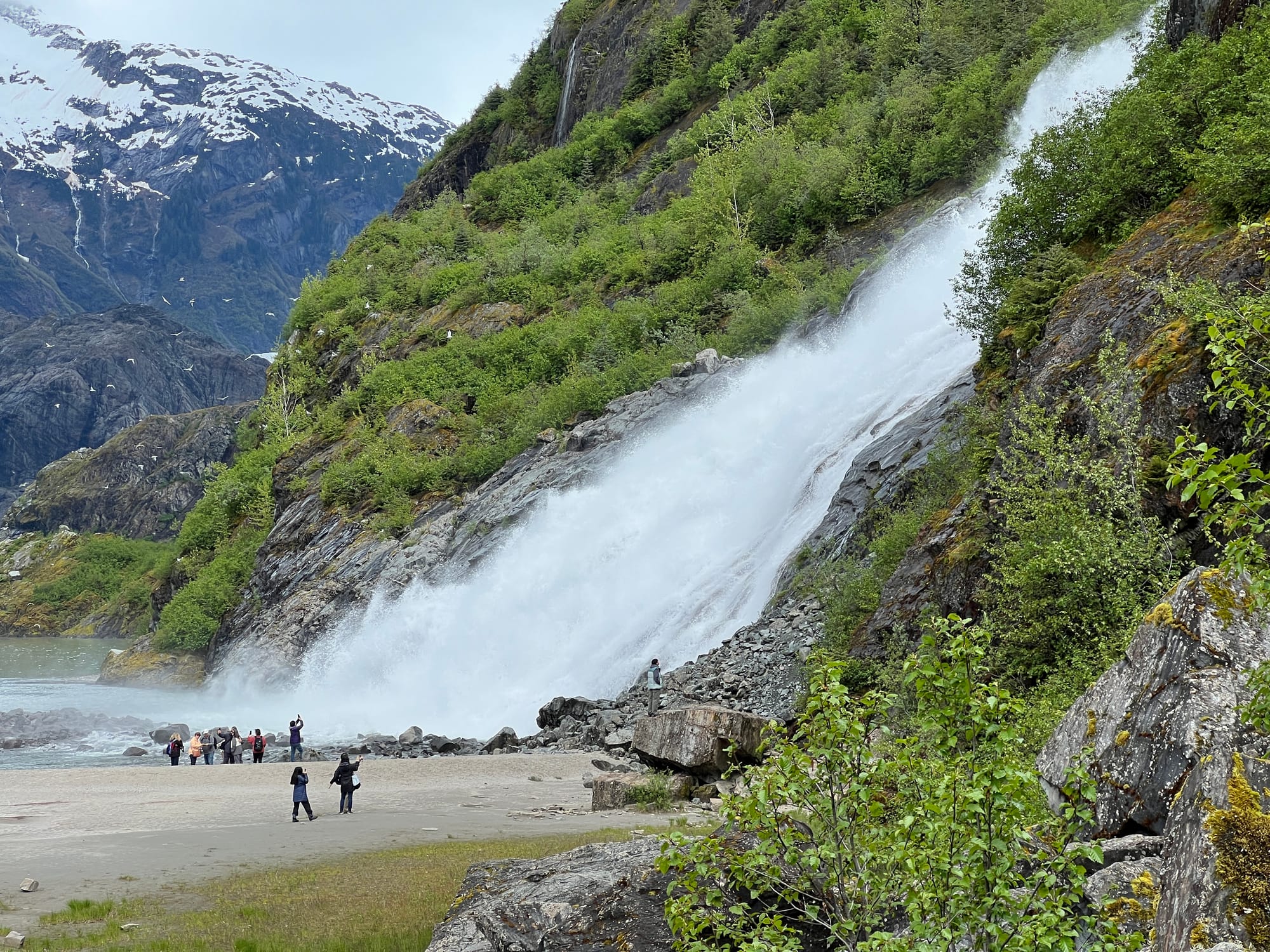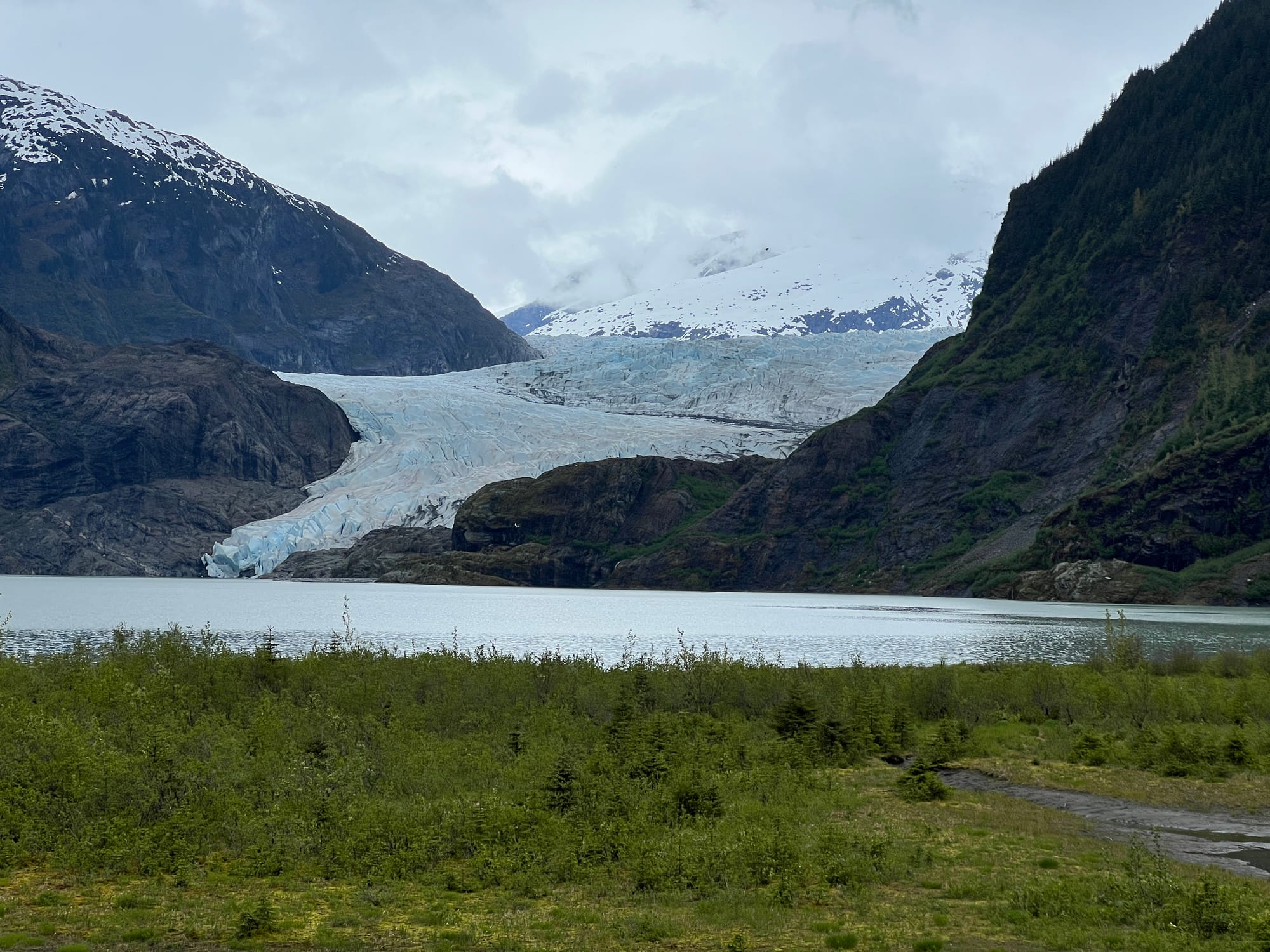The News Out of Alaska
There's been a lot of references to the 49th state in the past week.
Most notably, it was the hastily thrown-together meeting between President Donald Trump and Russian president Vladimir Putin that resulted in, shockingly, not very much news at all.
But that's not the news I'm talking about. I'm talking about last week's GLOF.
That's a glacial lake outburst flood. As glacier's melt, they retreat, and its lower areas can begin to collect water. But the walls of this lake are brittle and subject to collapse, and if they do, widespread flooding can result.
From the story:
The glacial lake that is overflowing this week in Alaska sits at the foot of the Suicide Glacier, an ice mass north of Juneau. Decades ago, the Suicide Glacier flowed into a much larger river of ice, the Mendenhall Glacier. But as the Suicide melts and shrinks, a steep gap has opened up between it and the Mendenhall. This gap is now called Suicide Basin.
(Experts have proposed renaming Suicide Basin to Kʼóox Ḵaadí Basin, which in the Tlingit language translates to “Marten’s Slide Basin.” A marten is a lithe, weasel-like animal found in the area.)
Snowmelt and rain accumulate in the basin, and when the water is high enough, it starts draining through cracks in the Mendenhall Glacier before flooding the Mendenhall River.
The first time this happened was in July 2011, and it took downstream communities by surprise. The basin has since filled and drained at least 39 times, according to the National Weather Service. Early Wednesday, as the basin drained once more, the Mendenhall River peaked at a height of 16.65 feet, exceeding a record set last year.
The glaciers in this region are part of the Juneau Ice Field, a sprawling area of interconnected ice that is melting twice as quickly as it did before 2010, scientists reported last year. More of the area’s glaciers are detaching from one another, the researchers also found, which can lead to the formation of lakes like Suicide Basin.
This is clearly bad news for Alaskans in Juneau. But I share this not because they need me to amplify their bad news, but rather because of a feeling that crops up in me when I've seen the site of some big news event firsthand.
I was at the foot of the Mendenhall Glacier in June. It was an incredible sight to see. The glacier looming in the distance and Nugget Falls pouring in the fore.

We stood at the foot of the falls and peered around the bend, able to see the edges of the glacier. The better views came from farther away, but the size and scale of the thing was immense up close.

The stats from the New York Times article just felt much more tragic having laid eyes on the thing. The thought of it disappearing — no, more accurately the reality of it disappearing — feels almost too much to bear. It is a wondrous thing, this natural world of ours. I don't have anything more profound to say about it than that, but it's all I could think about when I saw this tiny pebble floating by in the rapid rushing river of news. It was heartbreaking, and I could speak that truth with certainty. Because I'd seen it myself.
Perhaps that alone is the best argument for travel: so it's ever so much easier to give a damn.
Comments